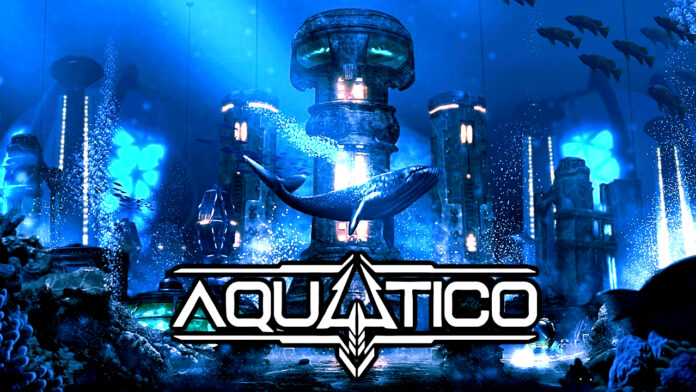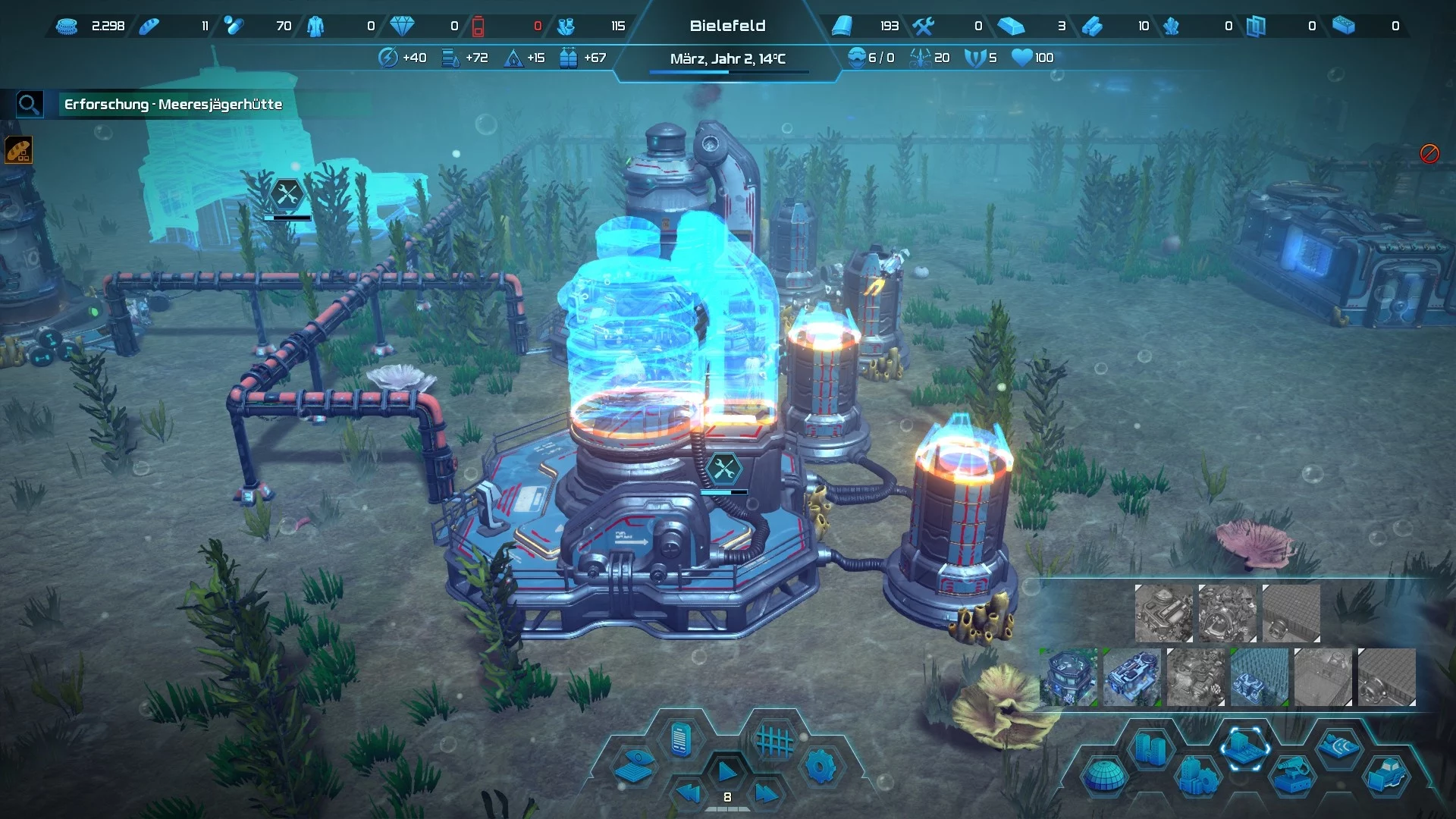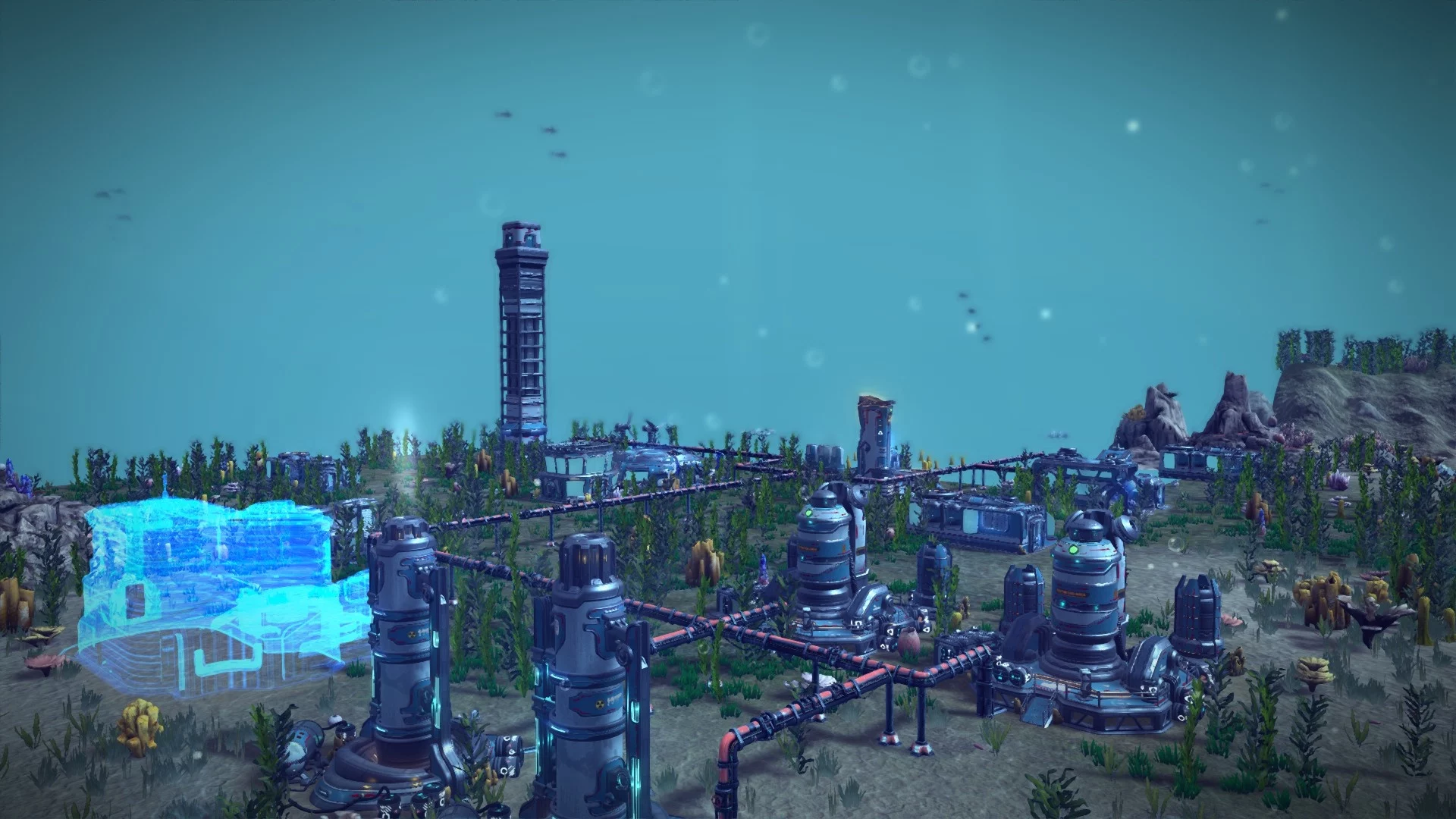The first big construction game hope of 2023 goes down the drain in the test: Aquatico has a great idea but does far too little with it
The story of Andrew Ryan, who wanted to build a utopia on the bottom of the sea away from the great world powers and failed miserably, has been told often enough. Instead of rehashing the old stories, the building strategy game Aquatico gives you the opportunity to build your own underwater city – which hopefully works better than Ryan”s attempt in BioShock.
Or you might end up like us in the test and half of your inhabitants starve to death while the rest are eaten with relish by sharks. To give you a good insight into the game before a possible purchase, we have recorded eight minutes of gameplay from the Steam game to go with this test:
Under the Sea
The dinosaurs had to learn the hard way 65 million years ago that mighty boulders from outer space are not to be trifled with. Mankind in Aquatico is still doing well: although a meteorite called Nimrod has made the earth”s surface uninhabitable, the seabed is still in great shape!
As the mayor of an underwater colony, you are now supposed to help mankind find a new home. All this is told to you via a few pretty stills in the unfortunately rather short intro. But where is the best place to build such a colony?

Aquatico lets you choose from 13 hand-built starting positions that are either “normal” or “challenging” in terms of ambition. This can refer to how much free space you have available. Players with a lot of building experience are advised to go straight to the more challenging maps.
The economy must be humming
Before you place your underwater base – a futuristic village centre – in the actual game, you should first activate the grid view. This is an overlay that shows you which resources are available in which places; orange, for example, stands for crude oil. Planning ahead therefore plays a role.
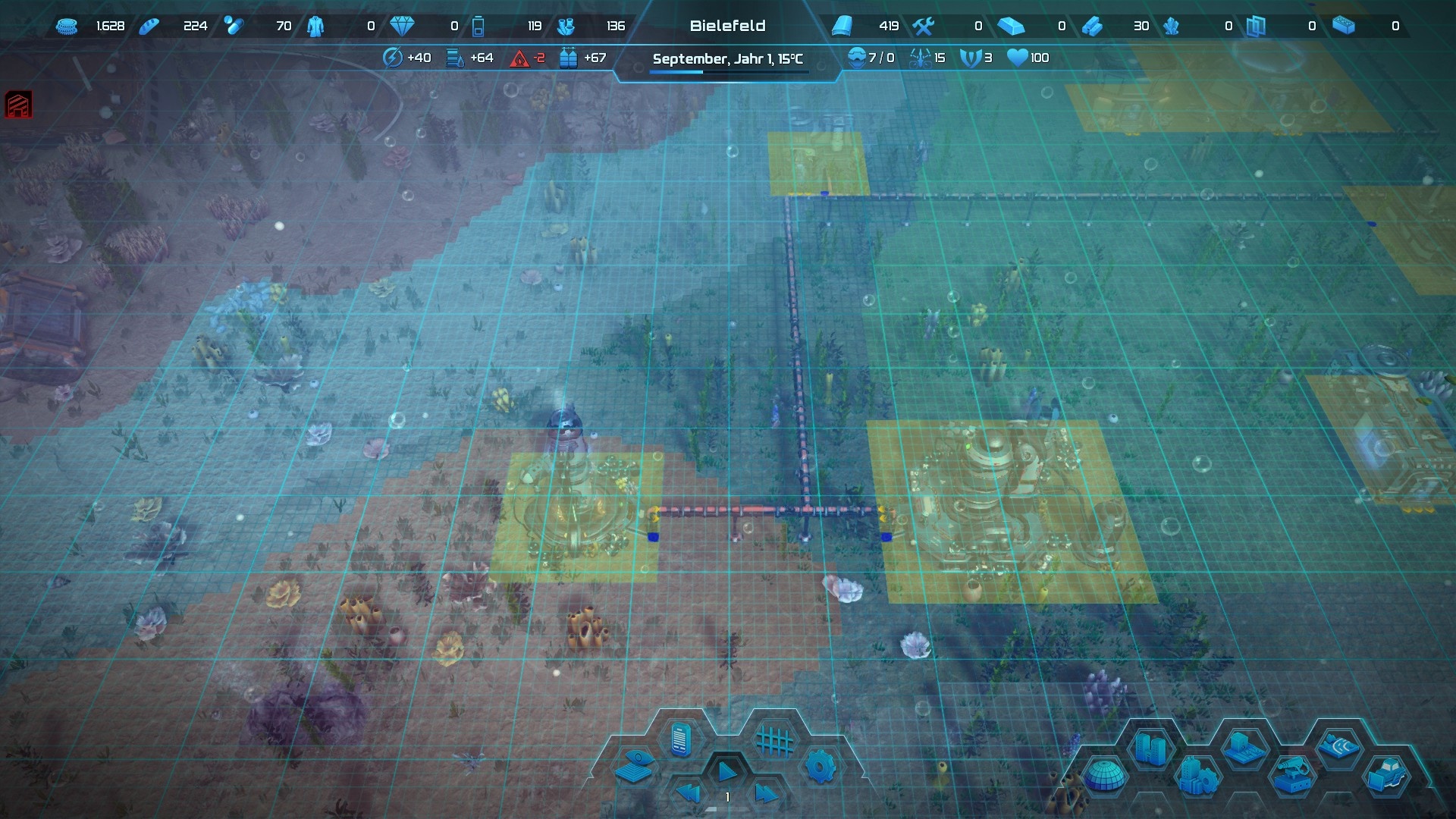
After that, you turn your attention to building your infrastructure. Refineries in combination with oil pumps ensure that there is always enough fuel, while plastic factories provide building materials. Most buildings must be connected via pipes in order to function. Or to be precise: via a single, very long and later extremely branched pipe.
The fact that technology will be more advanced in the future than it is today makes sense in principle, of course. But transporting oil, fuel, electricity and oxygen all via the same pipe seems disproportionately simplistic. We would have liked to have seen more complexity here.
Dwellers with high demands
While many of the menial tasks are done by drones, your human inhabitants are called upon for more complex tasks. You can either manually assign jobs to your citizens or have them work automatically. The humans do not live next to your industry on the seabed, but in domes, which in turn are located on huge towers.

Within such a dome, you will then have a new range of buildings at your disposal, designed to make your inhabitants as happy as possible. Besides clinics and clothes shops – an oxygen supply wouldn”t be bad either, by the way – there are also dozens of decorative elements. So, the lovers of beauty will get their money”s worth.
Similar to Anno, your citizens have a whole range of needs that have to be satisfied, including above all food, which should ideally be as varied as possible. If your colonists are too dissatisfied, they will quickly leave, which can have a nasty domino effect and paralyse your city in the long run. However, we have also experienced that our colonists were 100% satisfied and still left for another colony. Aquatico is difficult to understand at times.
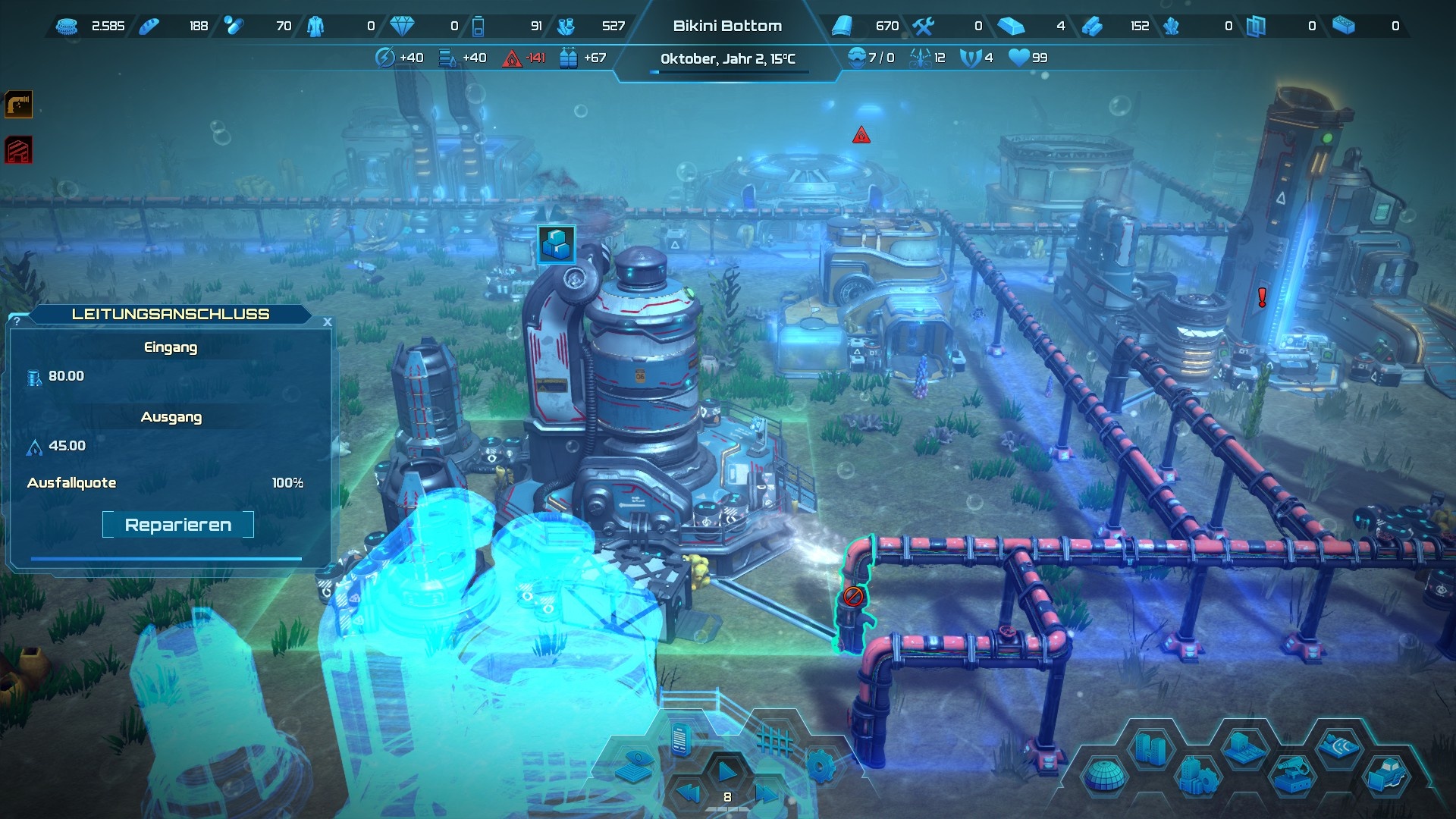
Hai caramba!
Apart from that, research plays a big role in the game. You can unlock a total of 150 technologies, including completely new buildings, but also production bonuses such as “All energy resources provide 10 percent more yield”. The so-called guidelines are also exciting. These are bonuses that you can activate against influence.
Such a directive then ensures, for example, that each of your houses yields one additional credit per week. Influence, on the other hand, is determined solely by the level of your underwater base. This also seems a bit too simplistic.
The same applies to research: you just invest a few credits, wait a bit and voilà, you have unlocked a new technology. It is also regrettable that the menus are extremely dull. You have to look for pictures and colours apart from the various shades of blue with a magnifying glass.
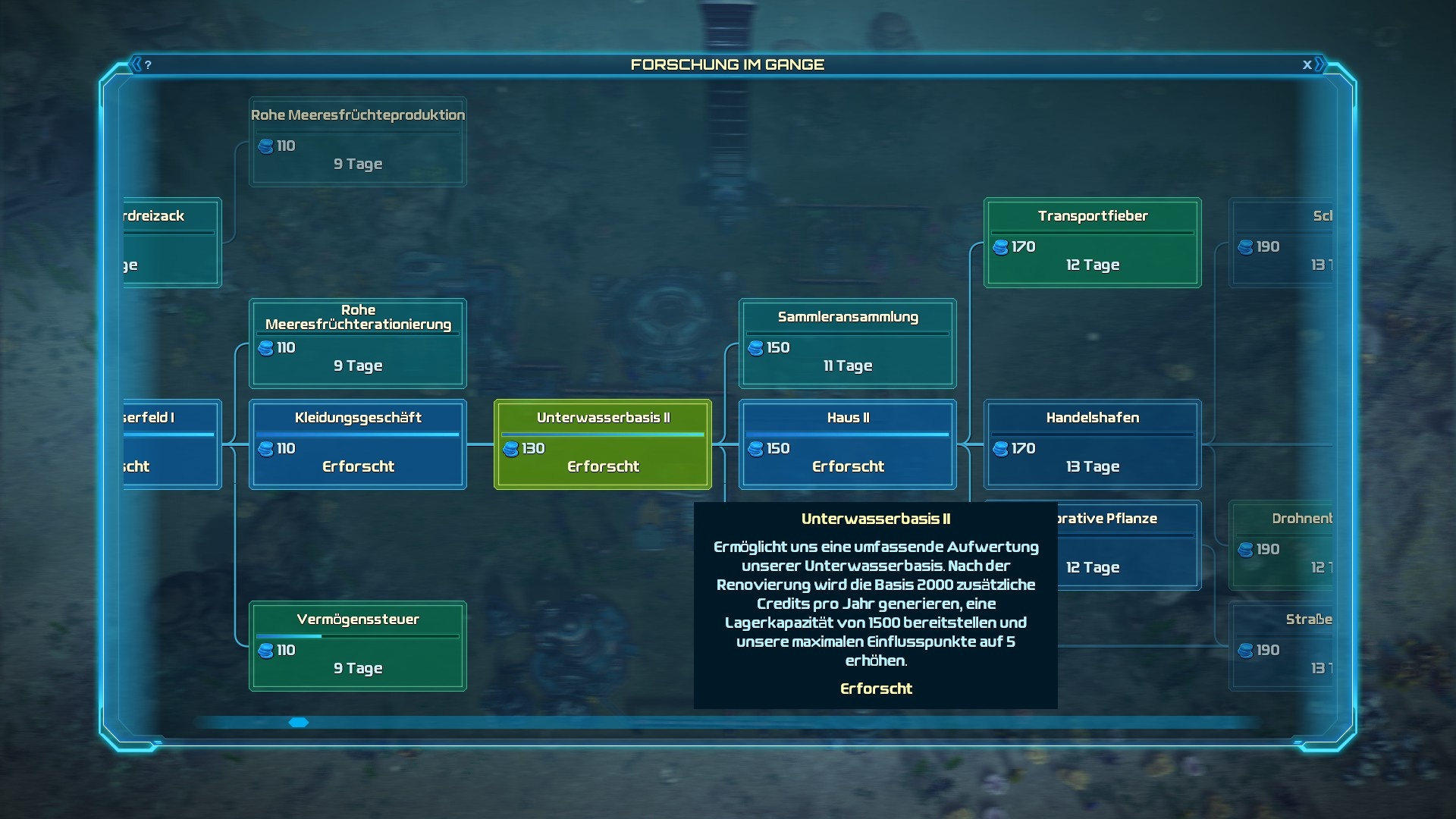
You can also pause the game or speed it up up to eight times. The latter leads to a very pleasant game speed – Aquatico is otherwise rather sluggish – but should not be used too lightly. You are regularly confronted with smaller and larger catastrophes.
For example, it can happen that your pipe has a leak or that sharks find your inhabitants literally scrumptious. The former can be fixed with a few credits and is more annoying than challenging. The latter sounds cool at first, but in the test we never got to see a real attack, we always just got the message.
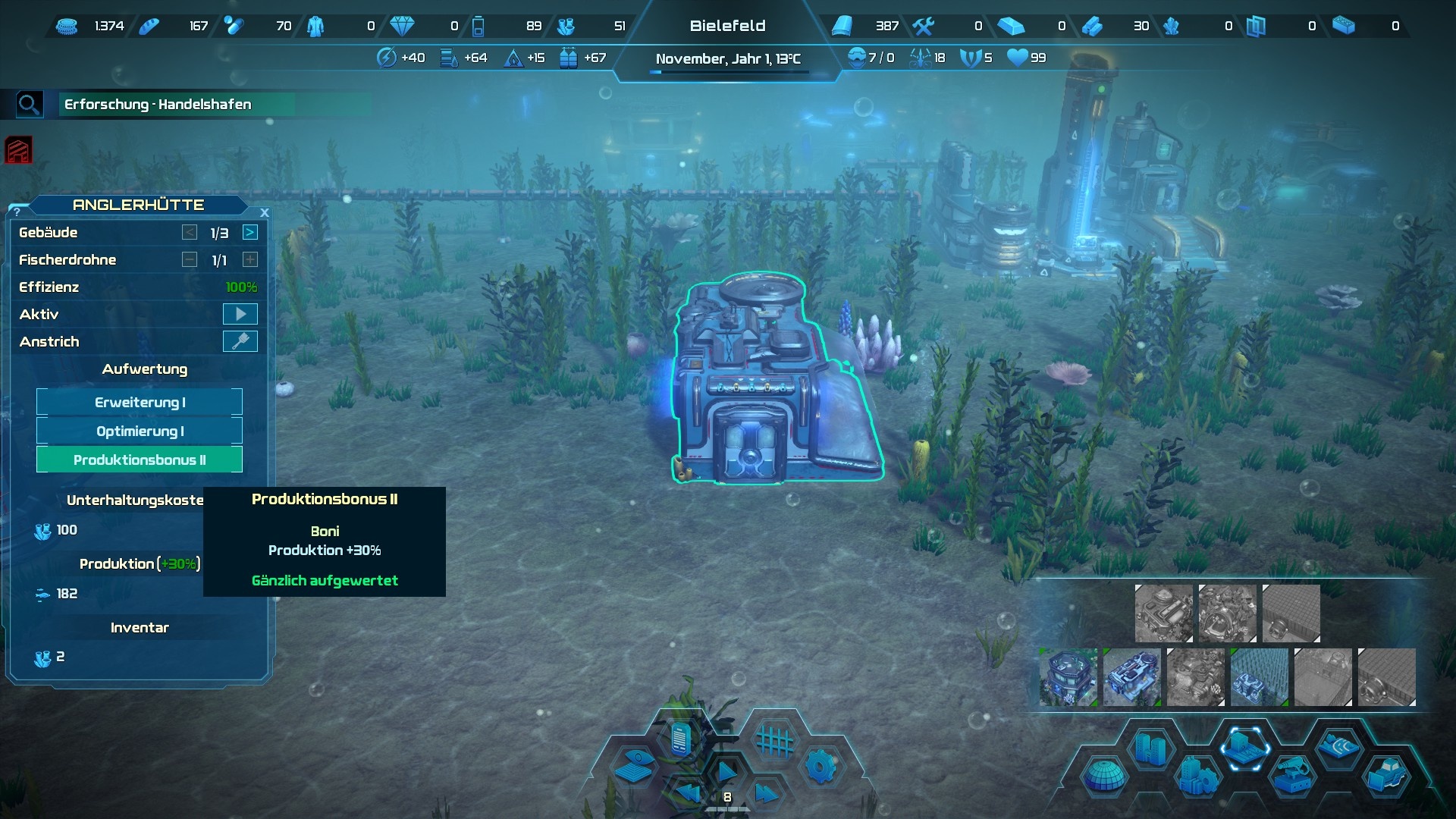
Modest graphics
When everything is just going according to plan, you have time to admire Aquatico”s graphics – and they are a double-edged sword. Basically, the exciting setting has been well realised: small bubbles of water rising up and schools of fish swimming by provide a lot of atmosphere. We also liked the building animations, which look a bit like the buildings are being constructed in a futuristic 3D printer. The models are detailed and the textures are sharp.
On the other hand, the setting also has its pitfalls: due to the fact that you are on the seabed, visibility is very low. On the one hand, this is realistic, but it also means that there are almost never really beautiful panoramas.
In addition, the buildings are difficult to read. In a medieval anno it is clear what is a farm and what is a quarry. In Aquatico, however, many designs lack recognition value. Our tip: You can colour buildings. Use this to highlight particularly important facilities.

More problematic is that Aquatico only offers the bare minimum in terms of modes. There is no multiplayer and no scenarios, instead you have to make do with the endless game, in which you ultimately only shimmy along the research tree.
If that”s enough for you, Aquatico is a nice building game with an exciting setting that”s good for in between. If, on the other hand, you are still unsure whether the excursion into the depths is worth it, we recommend (the demo on Steam) you.
Editorial conclusion
Anno, Tropico, Factorio and now Aquatico – oh, who can keep track of it all? I can tell you this much: Aquatico will certainly not be my new favourite building title. This is one of those classic “yes, but …” games: Yes, the setting is really atmospheric, but at the end of the day you”re just rattling off the research tree. Yes, the game graphics are pretty, but the menus make even Excel spreadsheets look exciting. Yes, there are many buildings, but why only one game mode?
You can already see it in the rating box: it”s hard for me to identify one aspect in which Aquatico really stands out. In the end, I could only just bring myself to give it an even 70 – to seriously compete with the greats of the genre, there”s just too much missing here.

